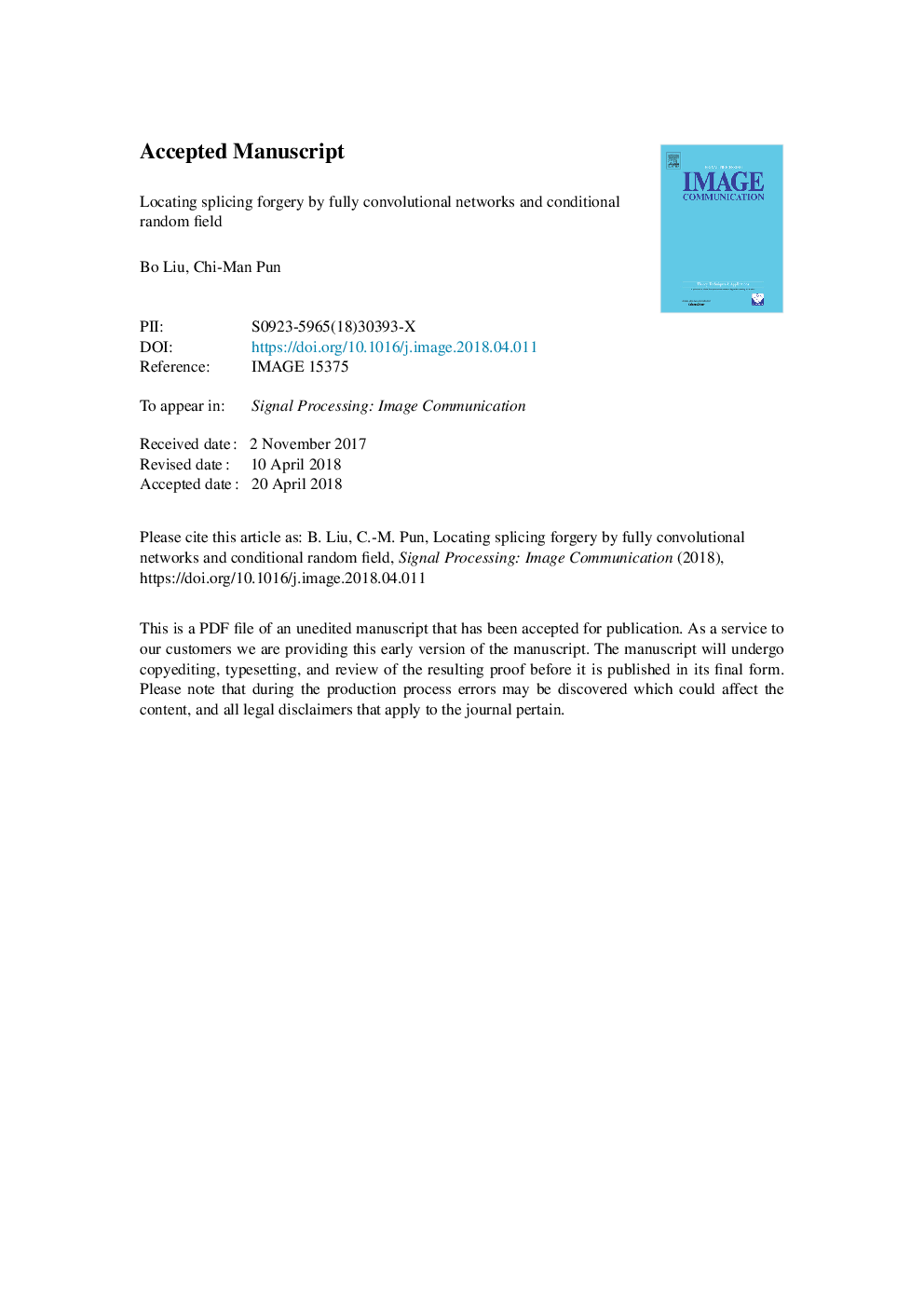| Article ID | Journal | Published Year | Pages | File Type |
|---|---|---|---|---|
| 6941474 | Signal Processing: Image Communication | 2018 | 27 Pages |
Abstract
To expose and locate splicing forgery, hand-crafted features are often utilized to discern tampered area in a synthesized image. However, given a spliced picture without prior knowledge, it is difficult to tell which feature will be effective to expose forgery. In addition, a certain hand-crafted feature can only handle one kind of splicing forgery. To address these issues, a method based on using deep neural networks and conditional random field is proposed in this paper. It is achieved by training three different fully convolutional networks (FCNs) and a condition random field (CRF). Each FCN is specialized to deal with different scales of image contents. CRF adaptively combines detection results from these neural networks. Then the trained FCNs-CRF can be used to perform image authentication, yielding pixel-to-pixel forgery prediction. Our FCNs-CRF framework achieves improved performance comparing to existing methods relying on hand-crafted features.
Related Topics
Physical Sciences and Engineering
Computer Science
Computer Vision and Pattern Recognition
Authors
Bo Liu, Chi-Man Pun,
